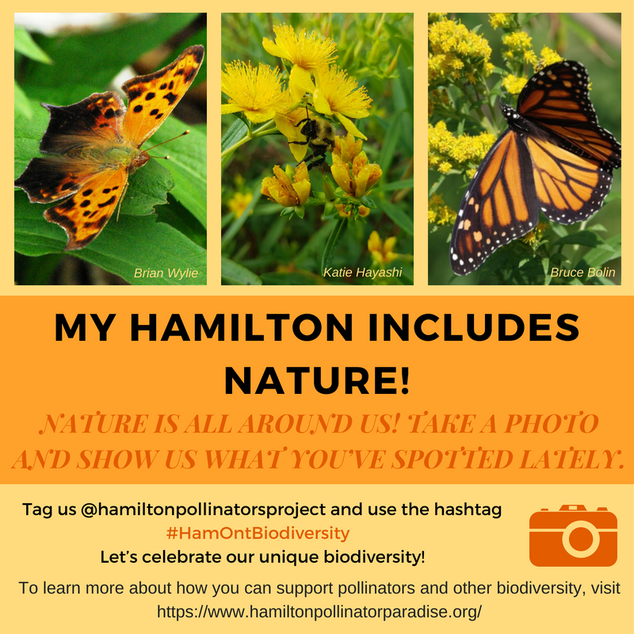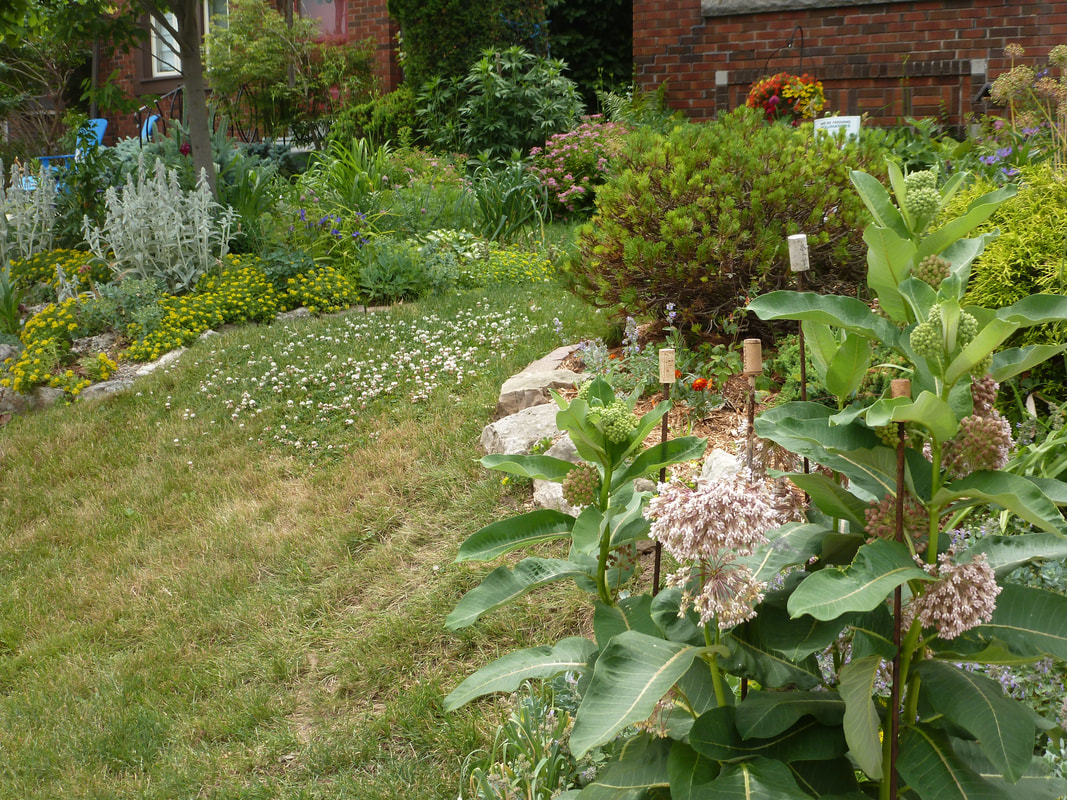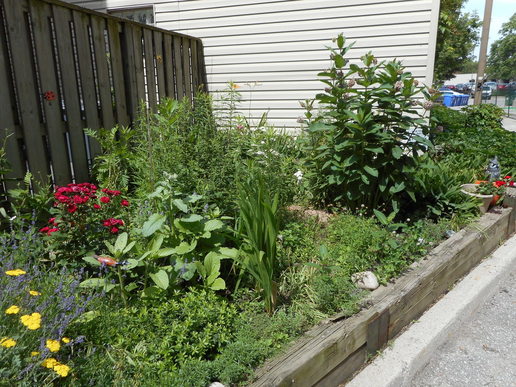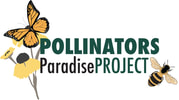 On August 1st, the Hamilton Pollinator Paradise Project is launching a campaign to celebrate Hamilton's unique biodiversity. We are inviting you to look around you and take a photo of what you’ve spotted lately and share with us on social media! But first, what is Biodiversity? What is Biodiversity? Biodiversity is the rich variety of plant and animal species on Earth and the habitats they live in, including pristine lands, cities and towns. We depend on Biodiversity Every aspect of our lives, from the food we eat to the water we drink and the air we breathe depends on the resilience of this biological diversity-- a result of billions of years of evolution, of which every single organism serves a purpose in the maintenance of the Earth’s ecology. Biodiversity Makes Everything Better! Biodiversity enhances local economies, strengthens ecological systems, and protects social well-being. Biodiversity conservation, planning and management results in positive impacts to water quality, air quality, and food production to name a few. Our Hamilton Nature Our City is a part of a biodiversity hotspot of many different types of habitats including: fens, swamps, bogs, Carolinian forests, tallgrass prairies, meadows, thickets, creek valleys, and the rocky profile of the Niagara Escarpment. -These habitats support diverse species, including over 1,000 different kinds of plants, 100 butterfly species, 87 fish species, and 43 species of mammals. Throughout the month of August, please take a photo and share with us on the following channels:
1 Comment
 Norm's pollinator paradise Norm's pollinator paradise Continuing with our new "Stories from the Pollinator Patch" series, here is a piece by Norm Madill of Westdale. Most Canadians live in urban settings, yet we carry within our souls images of the breath stealing beauty of the natural landscape of this awe inspiring country. Millions of us try to capture a tiny piece of that beauty within our own gardens or on our balconies. This makes the nursery/garden centre business a billions of dollar industry within Canada. I always thought of myself as a rather typical Canadian gardener. In the Spring I would buy a flat of geraniums, fibrous begonias, marigolds and snapdragons to add to the roses and perennials that grew in the garden. They gave a lot of colour and I often received positive comments from neighbours and passer byes about how my garden looked. After I retired, I started to volunteer in the green houses at Royal Botanical Gardens in Hamilton. The RBG Auxiliary grew a wide variety of plants that were sold during their annual May Plant Sale. Among these plants were a small group of Native Plants. I was generally not impressed with native plants. Their flowers were often smaller than those of the other plants. There were a limited number of natives that were available in the market place and those that we were able to get were hard to come by. For me, Natives were just another group of plants within our Auxiliary inventory. But things were about to change!  John's garden! John's garden! We love hearing from our "pollinators- supporting" community! check out these stories from gardeners whose gardens have been certified by our Pollinator Paradise certification program, and who are on our Pollinator Corridor Map Stay tuned for many more! John Forbes writes:. What's changed for me in becoming a pollinator gardener is that now I feel connected to anyone who tries to restore, renew or revitalize our planet. It doesn't take much: planting lots of lovely native perennials instead of rows of soldiering municipal annuals (do bees even like petunias?). Off seeing my first flittering Monarch at the milkweed this year; though wondering where the hell are all the bees. Harvesting overripe serviceberries amidst construction beeps and whishing-by traffic, on an island of grass, in a downtown street. |
Archives
December 2023
Categories |
|
|
Butterflyway Hamilton: www.facebook.com/butterflywayhamilton/
Environment Hamilton: https://www.environmenthamilton.org/ Hamilton Naturalists' Club: https://hamiltonnature.org/ |

 RSS Feed
RSS Feed